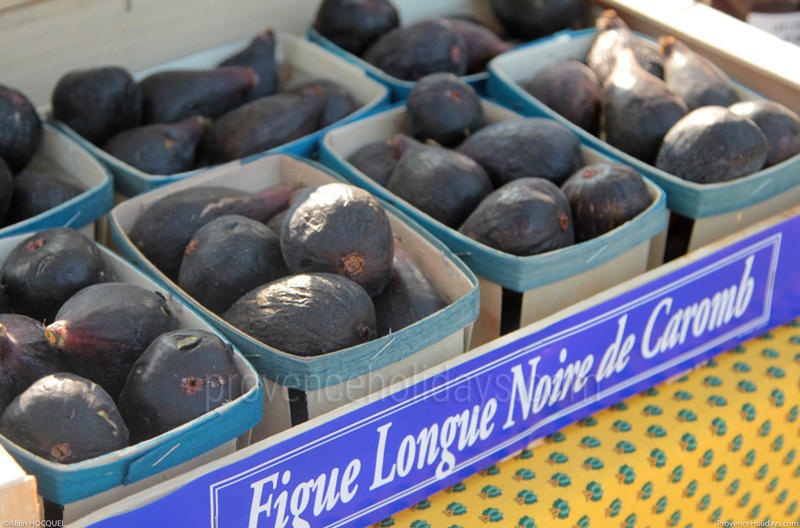Figs
History
The fig is believed to be the oldest fruit grown on Earth. The cultivation of the fig tree is said to have been the starting point of agriculture 11,400 years ago in the Middle East.
The Bible is full of references to the fig. In Ancient Greece, Plato considered it to be the "food of the athletes par excellence"; the Greeks mixed it with oil, bread, wine and honey whilst the Romans ate it with cooked ham and used it to force-feed geese. In Rome, Romulus and Remus were discovered by the she-wolf under a fig tree and Pliny the Elder listed some thirty varieties of figs as early as the first century. In the Middle Ages, the Marseille area was responsible for a large part of French production, but cultivation really developed in France in the 19th century and was quickly concentrated in the Solliès region.
Later, Jean-Baptiste de La Quintinie, the famous gardener of Louis XIV, planted more than 700 fig trees in the kitchen garden of the Château de Versailles at the request of the Sun King. The fig tree is therefore considered the emblem of the Mediterranean basin. The fig has always been at home in Provence where it is one of the thirteen Christmas desserts.
Varieties and Flavours
There are more than 700 varieties of figs, of which several dozen are grown in France. The main ones are :
- la bellone noire, produced in the Alpes-Maritimes
- la bellone grise
- la grise de Tarascon
- la violette de Solliès, appreciated for its sweet flesh
- la grise-saint-Jean, perfect for dried figs
- la marseillaise, also perfect for dried figs
The Question on Everyone's Mind
Is it true that when you eat a fig, you eat a dead wasp?
Well, yes! Because, contrary to what you might think, the fig is not a fruit but an inverted flower. The little filaments inside are flowers which, once fertilised, give fruit: these are the little crunchy grains found inside the fig. To be fertilised, these flowers need pollen. And this pollen is carried by the little fig wasp that comes to lay its eggs. When it passes through the lid under the fig, it breaks its wings and antennae. It is then impossible for it to get out of this trap. The fig tree then produces an enzyme called "ficin", which breaks down the wasp's body and transforms it into proteins.
How to Eat Them
Figs go well with countless dishes and flavours. Raw, it can be eaten with cottage cheese or yoghurt, in a fruit salad, as a starter with ham, walnuts, cheese and endives, with a salmon tartar, or as you wish. Cooked, it can be roasted with honey, accompany a duck breast, guinea fowl, rabbit or roast pork. As a dessert, in a pie, clafoutis or gratin. It can also be eaten dry and in the form of compote and jam.
A Recipe
Provençal Fig Cakes:
|
Preparation time: 10 minutes Cooking time: 25 minutes Difficulty: easy Cost: € |
Ingredients for 6 people 3 fresh figs |
- Preheat the oven to 180 °C (gas mark 6).
- In a large bowl, whisk together the butter and sugar.
- Add the eggs one by one, then the flour mixed with the yeast.
- Pour the milk over the mixture a little at a time and add 2 diced figs.
- Add 1 spoonful of ricotta cheese.
- Cut the last fig into slices.
- Line ramekins with buttered baking paper (or a muffin tin).
- Pour the batter into the ramekins, place a slice of fig into each cake and bake for 20 minutes.
- If necessary, sprinkle the warm cakes with 1 teaspoon of orange juice.
- Sprinkle with icing sugar. It's ready!
- Enjoy!
Where to Eat and Buy Them
On all the markets of Provence!
Fig Events
Caromb celebrates its emblematic fruit for the 13th year: the long black fig: producers' market, art craftsmen highlighting the fig, local gourmet craftsmen and much more!
The 24th edition of the Fig and Local Produce Festival will take place in Solliès-Pont on 27, 28 and 29 August 2021: a large market and activities will take place on Saturday and Sunday.

